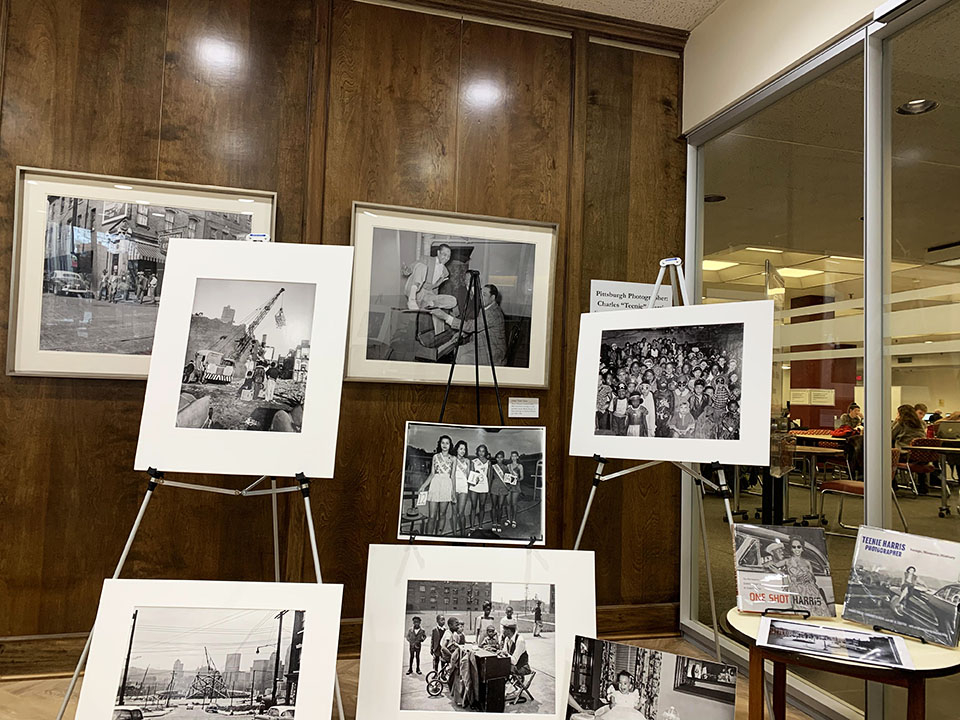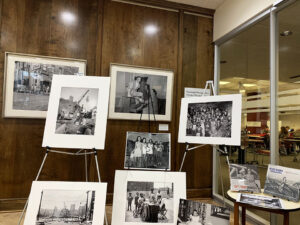

02/13/2020
Ashley Newman | staff writer
Before African American life was documented frequently by photographers, journalists or writers, Charles “Teenie” Harris took the daunting task into his own hands.
In his lifetime, Harris took tens of thousands of photographs and left an impressive mark on his hometown of Pittsburgh, specifically the Hill District. Harris’ photographs capture the essence of African American life in the Hill as early as the 1910s until his death in 1998. The photographs encapsulate everything from town hall meetings to christenings to weddings to nights out on the town, providing an important and unique look into life in the Hill.
Staff from Duquesne University’s Gumberg Library took interest in Harris’ work after reading “Smoketown: The Untold Story of the Other Great Black Renaissance” by Mark Whitaker.
Ted Bergfelt, Gumberg Library’s liaison to the departments of Classics, English and Theater Arts, History, Philosophy, Theology and the Center for Healthcare Ethics, was inspired to look more into Harris and his work, as he was predominantly featured in the book.
According to Bergfelt, Gumberg purchased six framed prints of Harris’ work to create an exhibit.
On Thursday, Feb. 6, Gumberg unveiled their newly acquired Harris photographs with a display and a lecture with Charlene Foggie-Barnett. Foggie-Barnett, an archive specialist at the Teenie Harris Archive at the Carnegie Museum of Art, spoke about what Harris meant to the people of the Hill.
Growing up, Foggie-Barrett knew Harris personally, and was even photographed by him on multiple occasions. She said that Harris had no idea of the impact he would have on society by his photographs, and was just a “working man” in his own eyes.
Harris was a close member of the community and could be seen at nearly every event. Foggie-Barnett said that because Harris knew everyone in the community, he was also skilled at knowing who should not be placed next to each other for pictures due to arguments and feuds.
Many of Harris’ photographs were published in the Pittsburgh Courier during his lifetime. Hailing from the Hill itself, The Courier was a leading African American newspaper in America. The Courier was a nationwide publication and one of the nation’s top newspapers for African Americans from the 1930s to the 1960s.
“He would just show up everywhere. He wasn’t ‘Teenie Harris,’ he was Teenie Harris,” Foggie-Barnett said.
Harris did not capture only special occasions in the Hill, he would also photograph everyday life of the predominantly African American community rather than just the extreme highs or lows.
“He’s telling the story of the city that’s not slavery and not the Obama administration. It’s the way we lived and the way we made it,” Foggie-Barnett said.
When important civil rights activists arrived in Pittsburgh, Harris made sure to be at the front of the crowd. According to Foggie-Barnett, Harris photographed President John F. Kennedy, Justice Thurgood Marshall, Martin Luther King Jr., Rosa Parks, Jesse Jackson and many other important figures in the Civil Rights Movement.
Foggie-Barnett praised Harris’ dedication to his photography and making sure that, although he only took one shot, it was perfect.
Harris was especially skilled at shooting skin tones of different hues and making sure that no one looked washed out or could not be seen in a photograph, according to Foggie-Barnett.
Foggie-Barnett closed the lecture by discussing Harris’ great impact on the community, and by describing the new exhibit dedicated to Harris at the Carnegie Museum of Art.
The museum has an archive of over 80,000 photographs that they have been working on digitizing since they were given to the museum in 2001. About 67,000 have been digitized and can be viewed on screens in the exhibit. Photographs can be searched for by the title, date, location, event or even the name of someone in the picture.
The museum has been asking people in the community for help identifying the subjects of Harris’ photographs. While they have identified many, they still have many unnamed people.
Anyone interested in viewing Harris’ photography and a historical view of Pittsburgh, can visit the new exhibit or look at the museum’s online archive.

